Are you in the midst of drafting an occupancy contract and looking for the perfect letter template to accompany it? Whether you're a landlord ensuring clarity or a tenant seeking peace of mind, having a well-structured letter can make all the difference in your agreement process. It sets the tone for a mutually respectful relationship and covers all essential points. Ready to dive deeper into how to craft this crucial document? Let's explore more!

Legal Parties Involved
The legal parties involved in an occupancy agreement contract typically consist of the Lessor, the individual or entity granting the right to occupy the property, and the Lessee, the individual or entity receiving the right to occupy the specified premises. The Lessor may represent a property management company or an individual landlord, while the Lessee is often a tenant seeking residence in a residential or commercial space located at a specific address, potentially bound by local housing regulations or commercial leasing laws. Identification of both parties' legal addresses, contact information, and the terms of occupancy play a crucial role in establishing the contractual relationship. Additionally, understanding any associated fees, responsibilities for maintenance, and duration of occupancy aids in creating a legally binding agreement.
Property Description
The property located at 123 Main Street, Springfield, encompasses a spacious three-bedroom layout, featuring 1,500 square feet of total living space. This residence includes two full bathrooms with modern fixtures, an open-concept kitchen equipped with stainless steel appliances, and a cozy living room designed for entertaining. In addition, the property boasts a fenced backyard measuring 0.25 acres, ideal for outdoor activities or gardening. Amenities include central heating and cooling systems, hardwood flooring throughout the main areas, and proximity to essential services such as grocery stores, schools, and public transportation, all within a three-mile radius. The neighborhood, known for its family-friendly atmosphere, also features parks and recreational facilities, enhancing the living experience for residents.
Terms and Conditions
Occupancy contracts outline the terms and conditions defining the relationship between landlords and tenants. Key aspects of such contracts typically include the duration of the lease agreement, often set for a year or a specified term, location details of the rental property (such as a specific address in Manhattan, New York City), monthly rent payment (for instance, $2,500), security deposit requirements (usually one month's rent), and maintenance responsibilities for both parties. Additionally, clauses regarding early termination or renewal procedures, utilities (like water, electricity, and internet responsibilities), and rules concerning guests or pets may be documented to ensure clarity and protect the rights of both tenants and landlords throughout the occupancy period. Dispute resolution mechanisms, often specifying mediation or legal recourse, further enhance the enforceability of the agreement.
Rent and Payment Details
The rent for the occupancy contract is set at $2,000 per month, due on the first day of each month. Payment methods accepted include bank transfer, credit card, and personal check, ensuring convenience for tenants. A security deposit equal to one month's rent ($2,000) must be submitted prior to move-in, safeguarding the property against damages. Any late payments incur a fee of $50 after a grace period of five days. Rental payments can be directed to the landlord's designated bank account held at First National Bank, account number 123456789, simplifying transactions. Tenants are required to provide proof of payment for clarity and record-keeping, ensuring transparent financial dealings throughout the agreed lease term of 12 months at 1234 Elm Street, Springfield.
Signatures and Date
Occupancy agreements outline the terms of residence in specific properties, often including details about rental payments, duration of stay, responsibilities of tenants, and property management rules. Essential components such as the signatures of both the landlord and tenant serve as binding consent to these terms, ensuring legal protection under local housing laws. Dates inscribed next to signatures confirm the timeline of the agreement, establishing its validity and compliance with regulations in various jurisdictions, including important laws in states like California (where housing contracts adhere to the California Civil Code). Having a clearly defined occupancy contract minimizes potential disputes and fosters communication between parties involved.

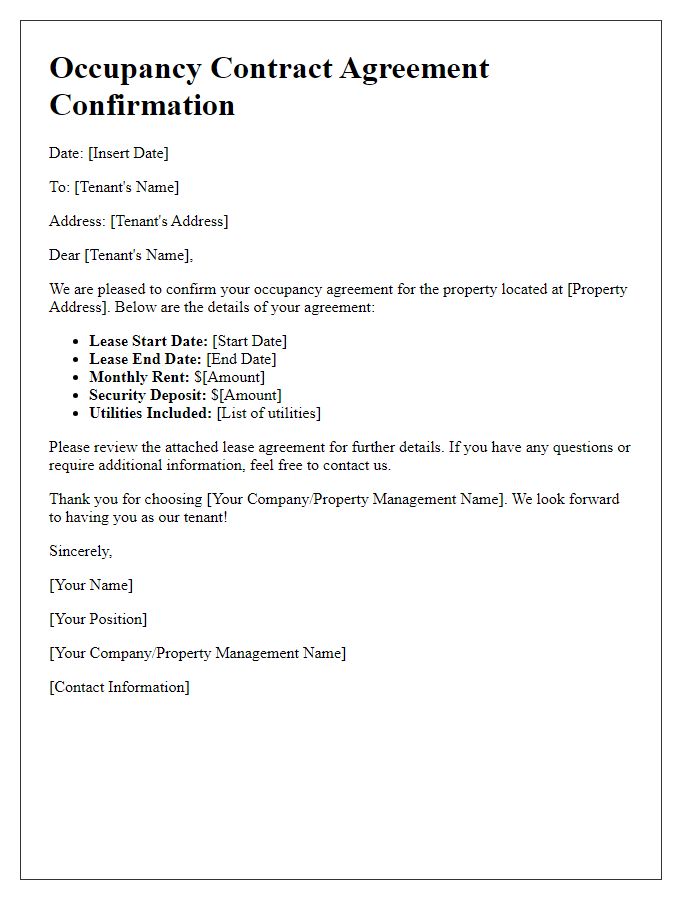
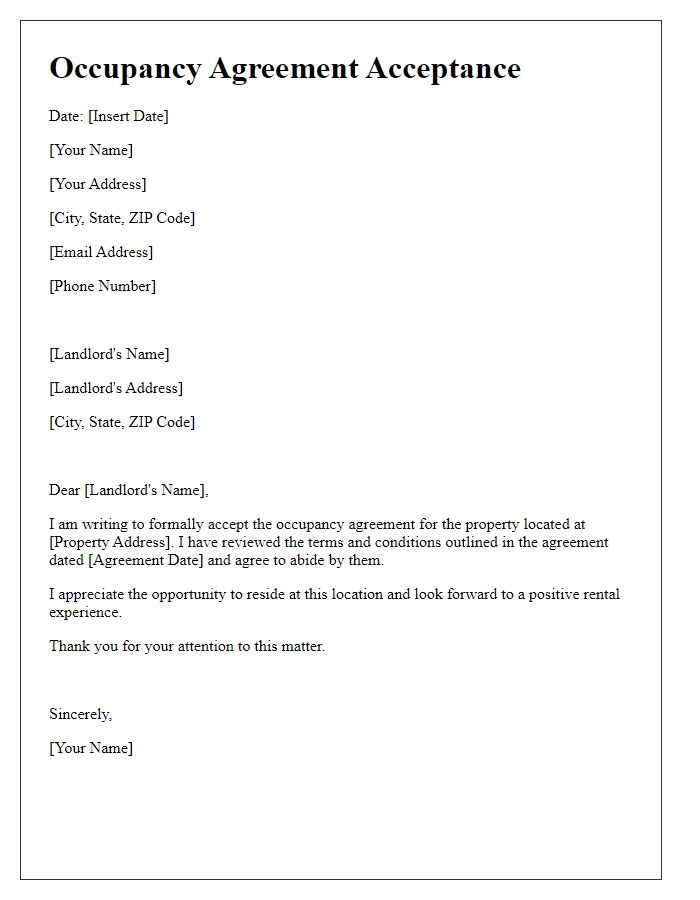
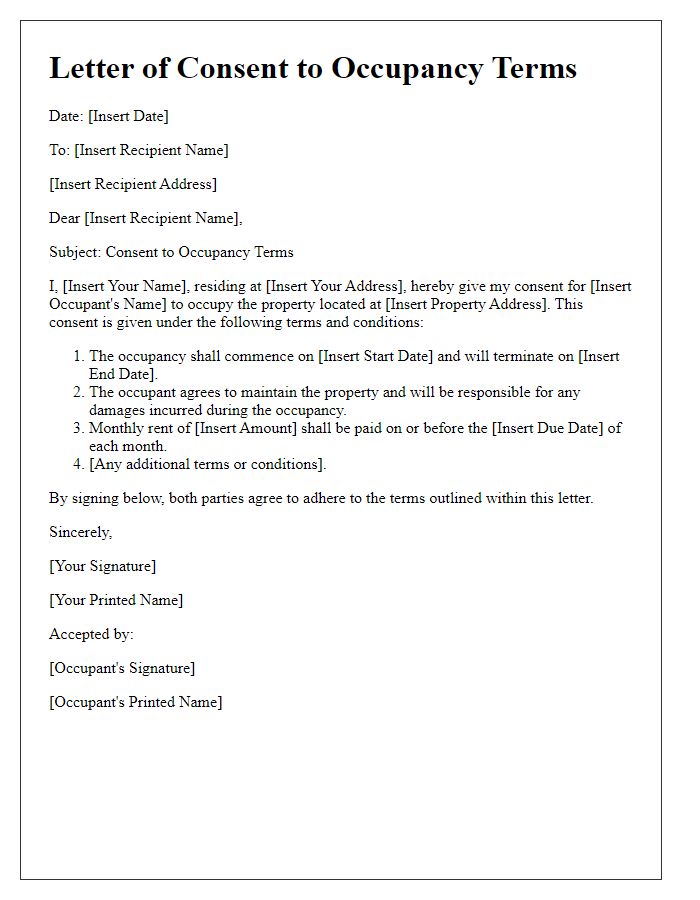
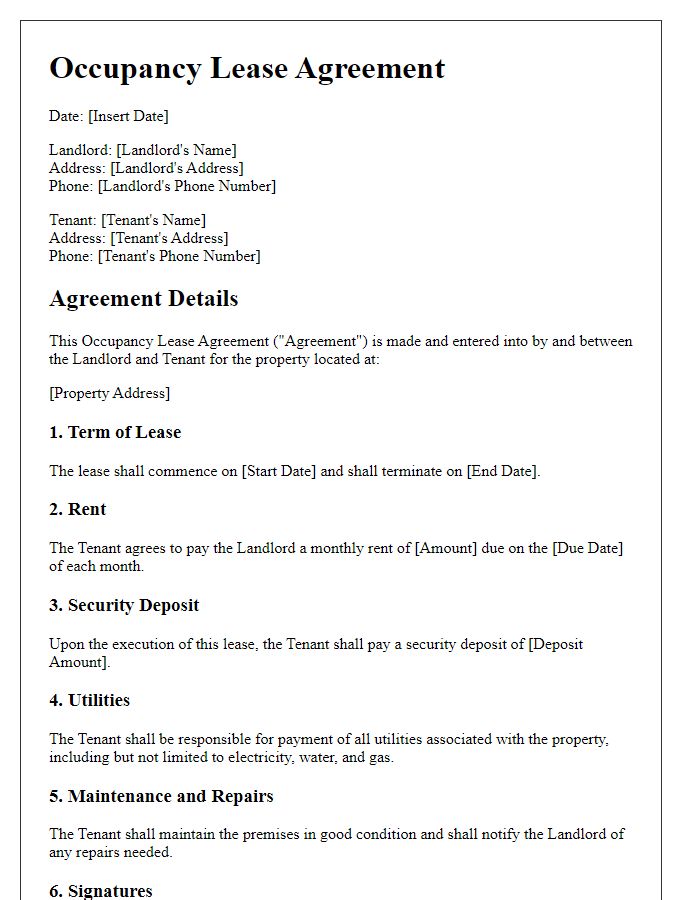
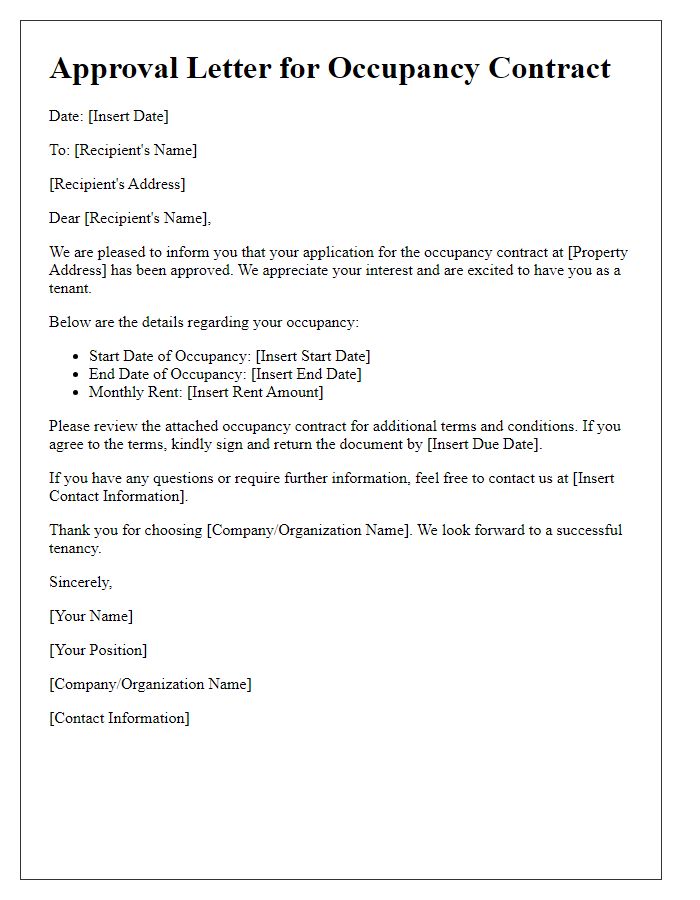
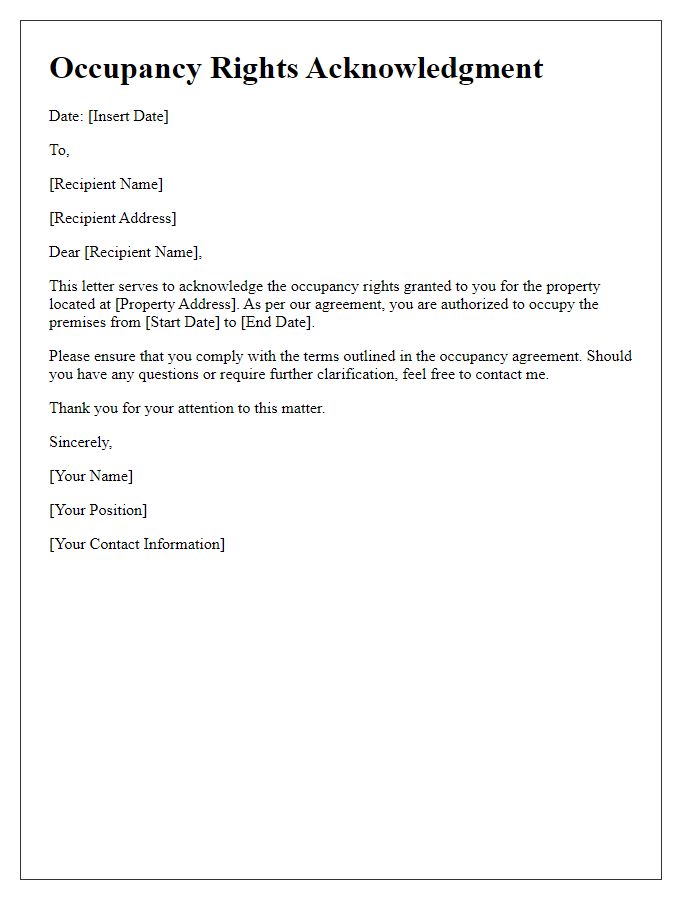
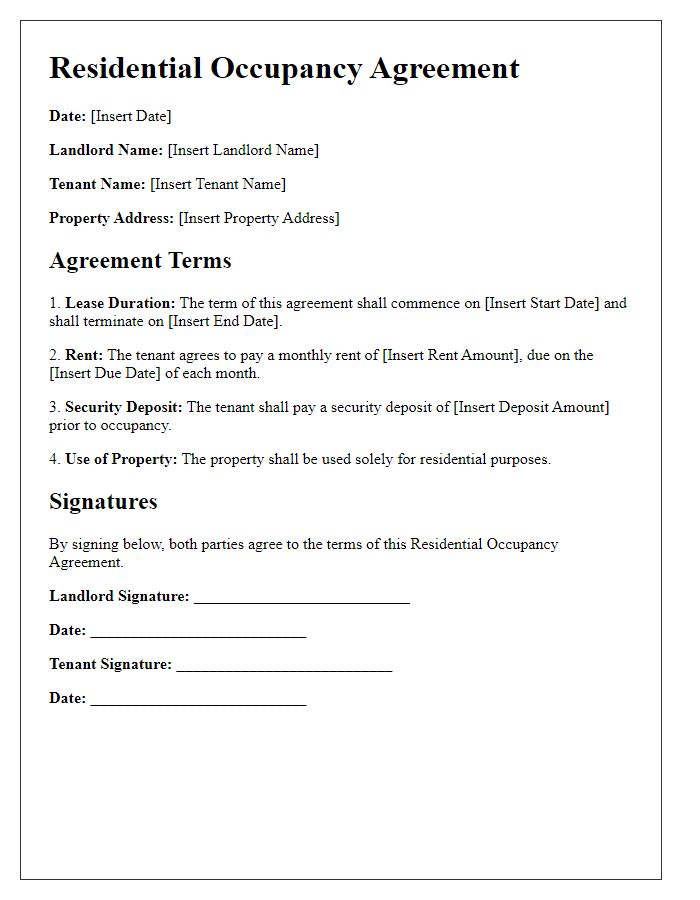
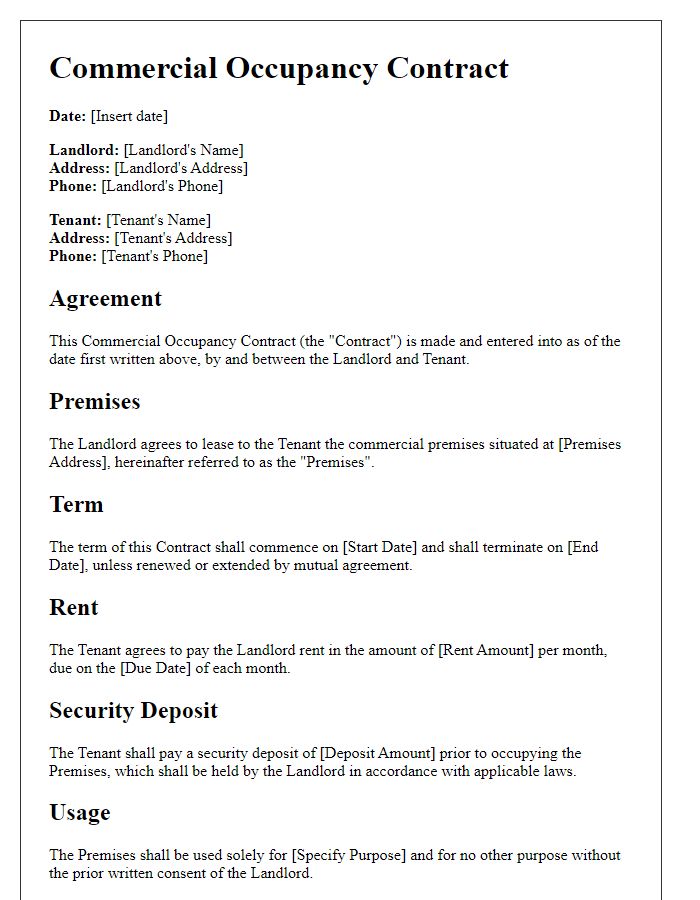
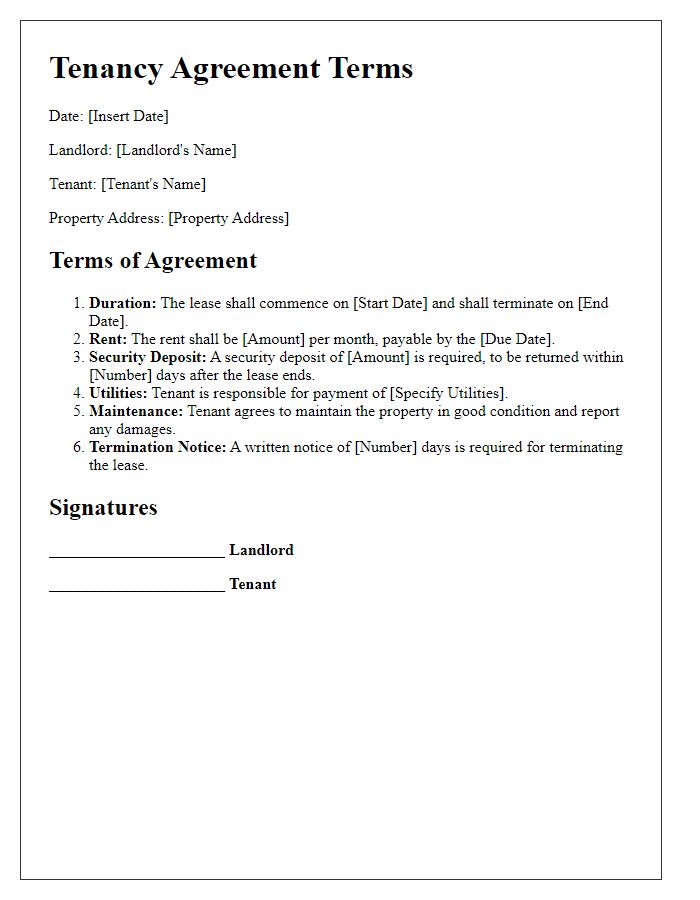
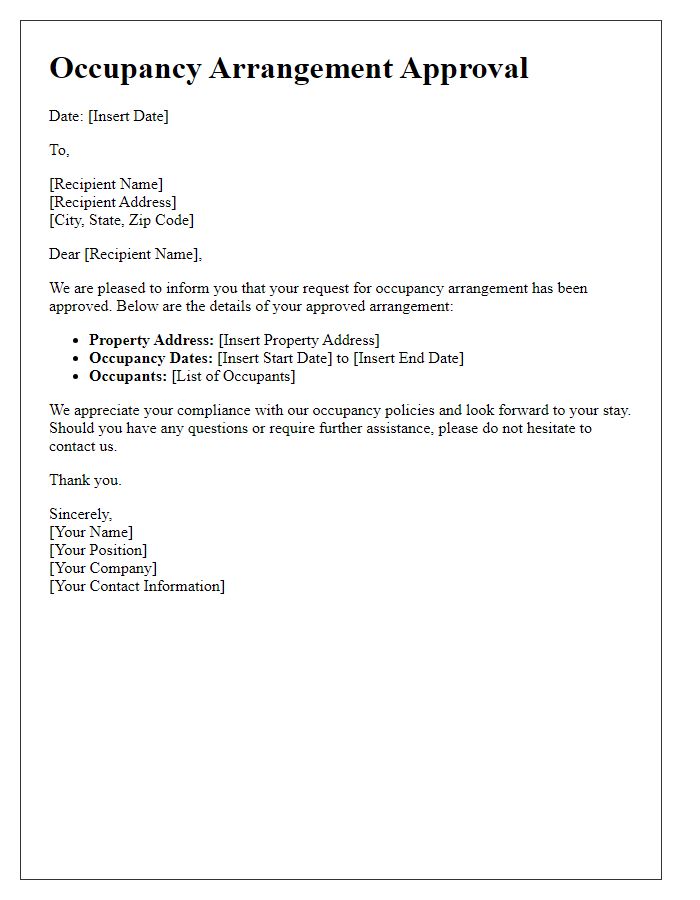


Comments